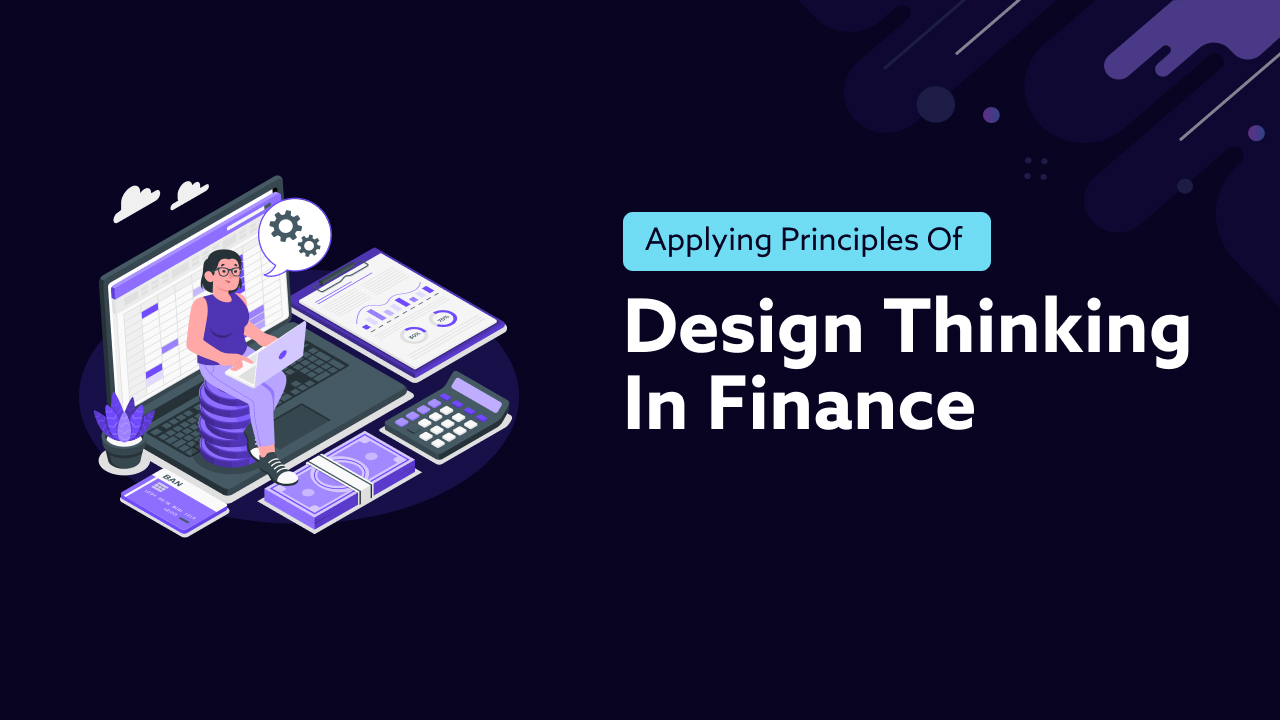insights

Applying Principles of Design Thinking in Finance

Hamza Zahid Piracha
Design thinking is a human-centered approach that can be applied to any problem. It involves empathizing with the user’s needs, defining the problem and exploring possible solutions through rapid prototyping.
As a financial professional, you may be wondering how design thinking can help solve complex problems in finance. The answer is simple: it can help you innovate faster, collaborate better and create better solutions for your business. But what exactly is design thinking? And how can it apply to finance? In this article, we’ll take a look at some of the most useful principles of design thinking and how they apply to finance professionals.
Empathy
Empathy is about putting yourself in someone else’s shoes — understanding where they are coming from, what they are going through and what they are experiencing. For example, if a business owner requires a financial report on urgent basis, trying to understand their situation and thinking of a solution would count as empathy rather than outright refusal because you are already buried with work.
Empathy plays a key role in developing good relationships with your colleagues, clients and any other people you might interact in a professional and personal capacity. It is the first step to take in the design thinking approach which helps you broaden your horizon and build problem solving approach.
Using qualitative methods over quantitative
Switching from “How much” to “How” and from “What” to “Why”. This paradigm shift involves understanding the reason behind numbers. Qualitative methods are more effective than quantitative methods in many ways. The most important reason is that they allow you to get more accurate results. They also help you understand why changes in variables happened or did not happen and what factors influenced them.
Instead of using quantitative methods to analyze data for decision making, finance professionals should include qualitative methods that allow for more creativity in problem solving. Taking feedback from different stakeholders, conducting cross-function brainstorming sessions and scenario building are a few techniques which can help building design thinking approach.
Thinking in terms of process rather than events
A key concept in design thinking is the idea that a organizations and individuals can achieve more if they use a process-based approach rather than focusing on isolated events. This is because a single event can often be addressed by a quick fix or temporary solution, but this isn’t always the case with processes. Processes are often long-term, so they need to be evaluated continually and improved over time.
This approach requires a different way of thinking about finance than most people are used to. In particular, it requires a shift away from looking at finance as an event-driven discipline (e.g., “the company’s earnings per share were low last quarter”) toward thinking in terms of process (e.g., “how does the company generate revenue?”).
Wrapping it up
Hopefully you’ve already seen how design thinking can be a valuable tool at your disposal. It’s easy enough to learn, and with the proper application of design thinking skills, finance professionals can think outside the box and identify opportunities that they might have otherwise missed. While not everyone needs to be a designer, everyone can benefit from design thinking.
Please let us know your thoughts regarding this topic.
Email us at [email protected]